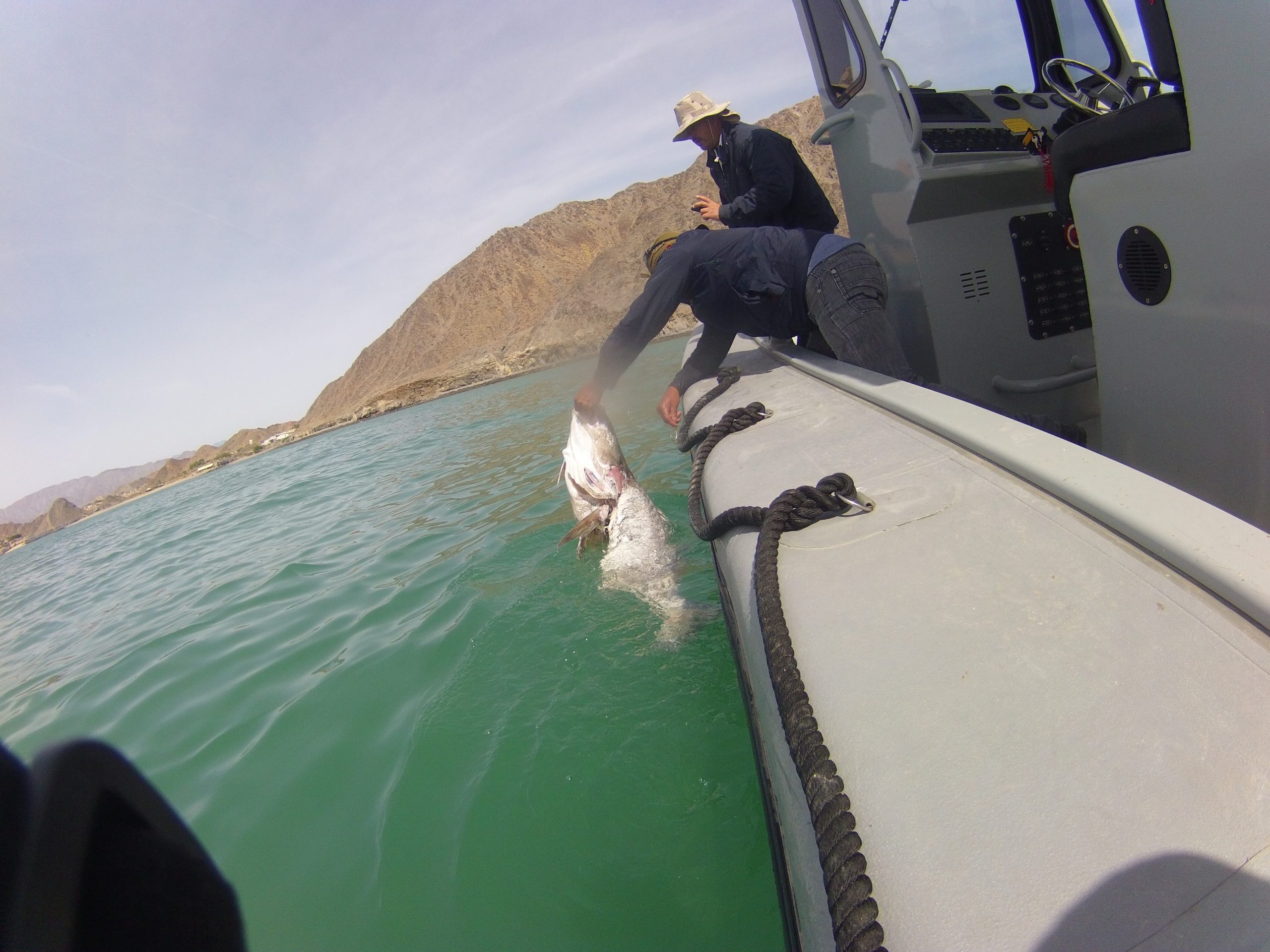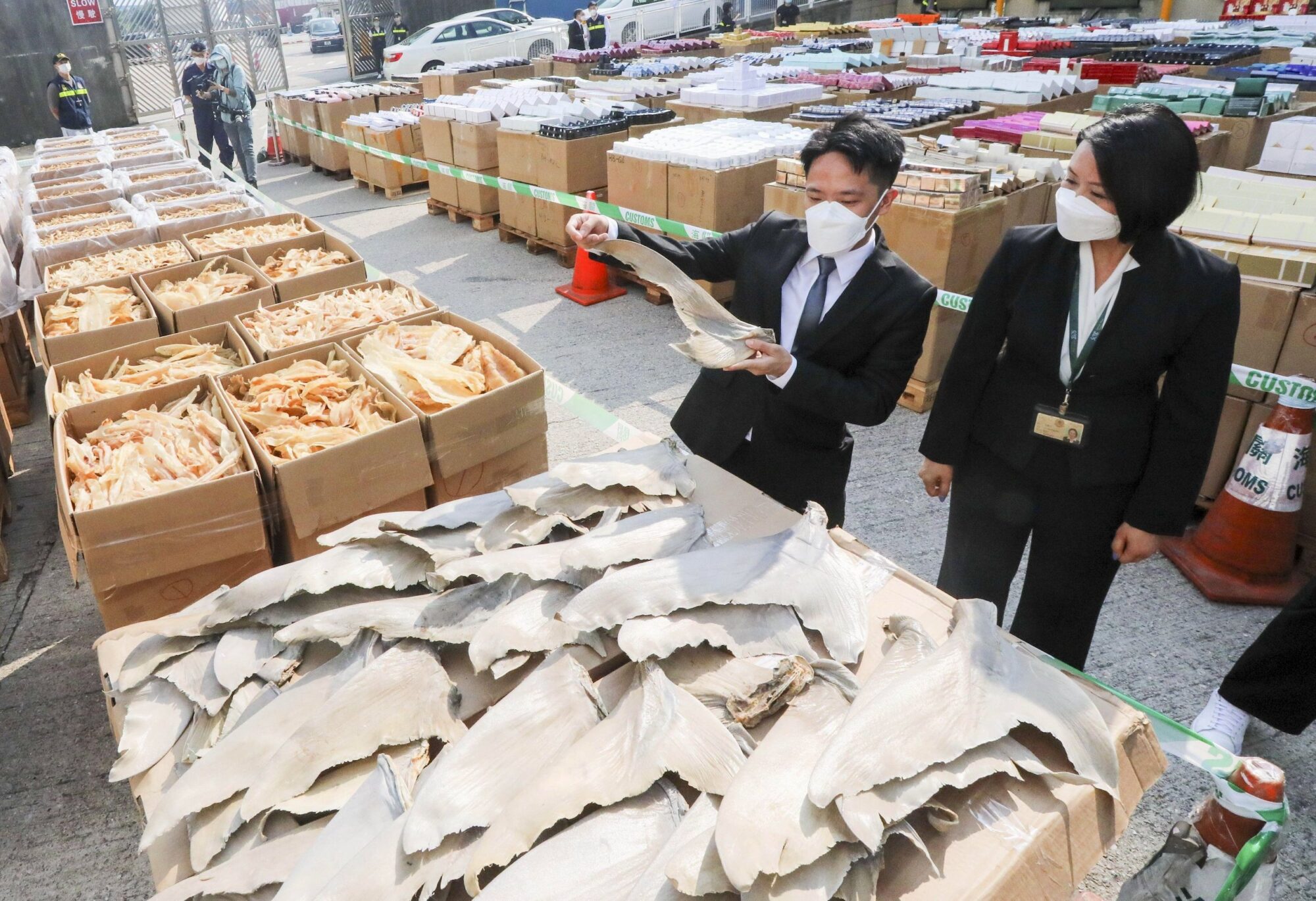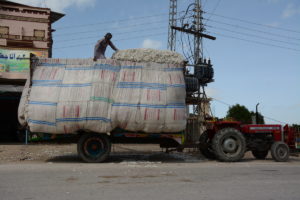In March 2022, Earth Ocean Farms became the first aquaculture company in Mexico to obtain permission to export the meat of the totoaba fish, following approval by CITES (the Convention on International Trade in Endangered Species of Wild Fauna and Flora).
Totoaba was critically endangered in the wild until 2021 when its status was improved to vulnerable. It has been cultivated in pens in Mexican waters for around 20 years. During the first decade, that was in an effort to succour the wild population. While in the last 10 years, farmers have been selling the fish domestically.
But the move to expand the market beyond Mexico to international consumers has prompted outrage from conservationists. While some people say it will drive economic growth, conservationists argue it will promote illegal trafficking.
Concerns, but no consensus
The totoaba, a large fish endemic to the Gulf of California, is highly coveted for its swim bladder, also known as “maw”. This gas-filled organ helps bony fish regulate their buoyancy, and is used in some traditional Chinese medicine.

The trade has fuelled fishing of wild totoaba, which is illegal, and driven another species, the vaquita porpoise, to the brink of extinction. These small porpoises must surface to breathe but regularly drown after being caught in the fine-meshed “gillnets” laid for totoaba. Such nets have been illegal since 2015, when the Mexican authorities prohibited their use in the Gulf of California, but the ban hasn’t been well enforced. It is estimated that there are currently no more than 10 vaquita left in the wild, making it among the most endangered species on Earth.
The CITES decision “will open up a massive loophole that will be exploited by those who want to trade the swim bladder,” says Clare Perry, climate and ocean campaign leader for the Environmental Investigation Agency, an NGO.
“There is a huge demand for swim bladders and it is increasing. Simply put, totoaba populations on farms will never be able to meet that demand,” she adds.
Alejandro Olivera, Mexico representative for the Center for Biological Diversity, another NGO, says his concern is that once trade starts, illegally caught totoaba could be passed off as legal. “Although there is an official Mexican traceability standard [to avoid this], it is very difficult to do in practice,” he argues. If organised crime networks do start laundering wild totoaba, this could lead to an increase in fishing for them, putting even greater pressure on the vaquita, Olivera adds.
But Luis Enriquez of the Marine Sciences Faculty at the Autonomous University of Baja California, disagrees. An expert in genetic traceability, he explains that the current traceability standard for totoaba, which was created in 2018, requires QR codes and labels. When there is an irregularity, a genetic analysis is carried out to verify whether fish are farmed or wild-caught. This takes no more than three days, he explains.
The CITES decision will open up a massive loophole that will be exploited by those who want to trade the swim bladder
“The criticism is that in Mexico there is neither the technology, nor the training for field personnel to be able to detect if this [a totoaba catch] is legal or illegal. It is very expensive to do the test, yes, but don’t say that we don’t have the capacity, because we have already developed that. We have the markers, it can be done,” he says.
Enrique Sanjurjo, former deputy director of WWF-Mexico’s oceans programme and director of Pesca ABC, an organisation representing fishers in Baja California, agrees that the standard is quite strict in terms of how totoaba should be produced, marketed and made traceable. If it works, illegally caught fish should not be exported.
In Mexico, there is a system of designated areas called Wildlife Conservation Units, known by their Spanish acronym UMA, and managed in part for biodiversity conservation.
“In general, the UMA system is one of the few things in this country that does not work so badly,” he argues.
Through the UMAs, traceability measures are already in place for the domestic trade of farmed totoaba – for meat, other parts and derivatives of the fish, with the exception of the bladder. The standard holds that every fish must have QR codes and labels that log their movement across the supply chain, from the UMA to the point of sale.
Current requirements dictate that aquaculture farms must be registered as UMAs by the environment ministry. Batches of produce must have documents containing detailed information such as fish species, UMA number, tax registration number, weight of fish, condition (such as whole, filleted, fresh, frozen). A farm must also be able to demonstrate genetic marking by genotyping.
Some see opportunity
Pablo Konietzko, director of Earth Ocean Farms, says that the company has a genetic traceability of 99.9% accuracy, with labels that go on each fish. A QR-coded invoice verifies the legal origin of the product, and accompanies each shipment to each client, from a distributor to a restauranteur.
“Our activity is aquaculture, it is not extractive fishing. We market the meat and not the swim bladder. And in the last nine years that we have been there, there has been no [smuggling] in that respect,” Konietzko explained.

In addition, he adds that the CITES approval opens up great opportunities for other farms, companies and cooperatives to produce, acquire and obtain registration with CITES to export legally. “It opens a market that has not been exploited legally.”
Enriquez agrees and highlights that the focus for 25 years has been to cultivate farmed totoaba for economic well-being, growth of the agricultural sector and the benefit of coastal communities: “It has the potential to become an economic engine. That meat is highly sought after.”
However, for Olivera it is not clear what will happen to the bladder, which is more valuable than the meat. Earth Ocean Farms has promised to destroy them.
“What is going to be the verification mechanism for this promise that the company made?” he asks. “It is hard to believe that, with the production costs they have, it turns out that they do not want to export the bladders and are going to burn them. Who is going to burn $100 bills?”
While there is debate about whether or not the CITES approval is beneficial to the species, it is certain that measures implemented to date by the Mexican government aiming to stop totoaba poaching and protect the vaquita have been insufficient. The Mexican government has been amply criticised for its ineffectual policies, as illegal fishing continues in the Gulf of California.
A number of local and international organisations, such as Sea Shepherd, have taken it upon themselves to work alongside authorities to protect the vaquita by confronting illegal fishing directly, often leading to violent conflict. But the real impact of the CITES decision on the totoaba and vaquita populations will only be known once exports begin.







